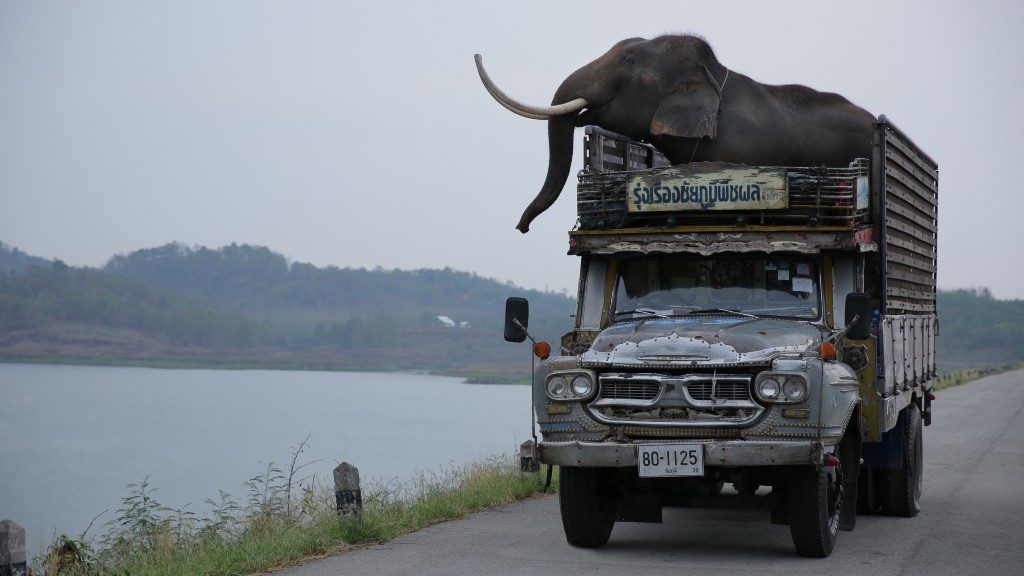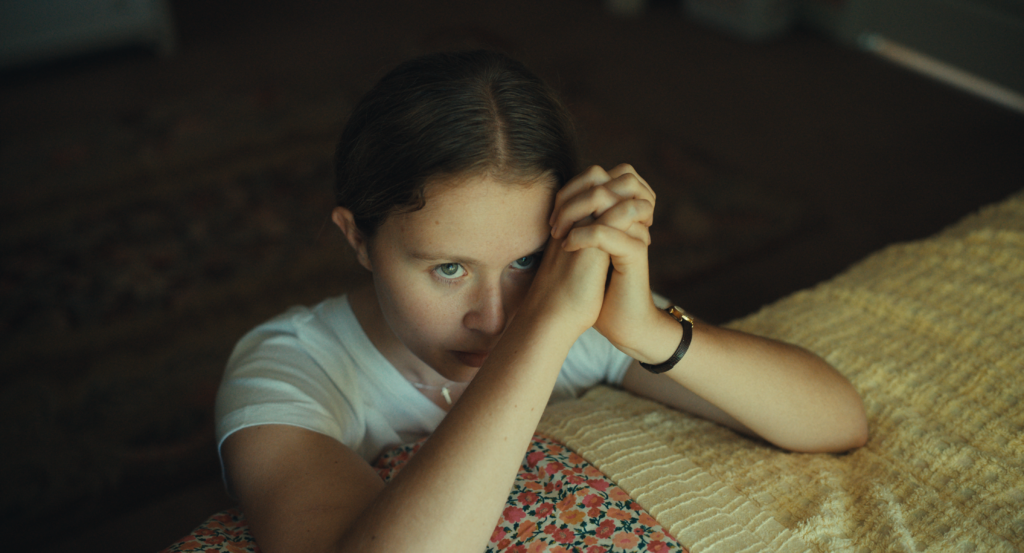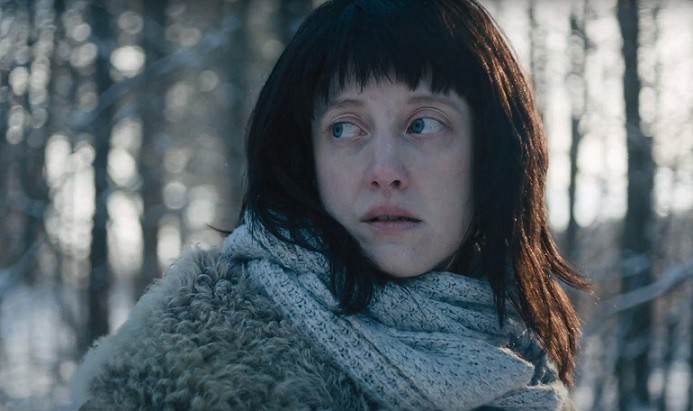Kirsten Tan is a writer, director, and cinematographer. Her work has screened at film fests across the world, including Singapore, Rotterdam, and Toronto. Tan has won numerous international awards, including Best Southeast Asian Short Film for “Dahdi” at the Singapore International Film Festival. “Pop Aye” is her debut feature.
“Pop Aye” will premiere at the 2017 Sundance Film Festival on January 19.
W&H: Describe the film for us in your own words.
KT: “Pop Aye” is a road movie with an elephant set in Thailand. It tells the story of Thana, a disenchanted architect, who bumps into Popeye, his long-lost childhood elephant, on the streets of Bangkok.
Dissatisfied with his current life in the city, Thana takes his elephant on a road trip across Thailand in search of the rural farm where they grew up together. He thinks that if he helps his elephant find home, he might find himself along the way too.
As in any road trip, they meet a host of characters along the way, including a fortune-telling vagabond, a poker-faced policeman, a crematorium monk, and lonely karaoke singer, who color their journey, as various mishaps — sometimes absurd, sometimes poignant, sometimes both absurd and poignant at once — befall them on the road.
W&H: What drew you to this story?
KT: I’ve always felt like a bit of a wanderer. Before moving to New York, where I’ve been based for the past eight years, I grew up in Singapore and lived in Jeonju and Bangkok. Across these cities, these homes, I was never sure where and when and how I fit in or belonged, so I’ve always felt for outsiders who don’t sit comfortably within one particular system.
For me, “Pop Aye” is essentially about two wayfaring misfits — in this case, a man past his prime and his displaced street elephant — searching for meaning and belonging in space and time.
W&H: What do you want people to think about when they are leaving the theater?
KT: I would be happy if “Pop Aye” could make people feel the inescapable forward motion of time more keenly, even if it’s just for a moment as they leave the theater.
At the same time, hopefully it makes people more alive to the bleak humor of everyday existence that often passes us by.
W&H: What was the biggest challenge in making the film?
KT: This is going to sound obvious, but I think the biggest challenge in making this film was the mere but mammoth fact that it had an elephant in it.
It might seem enchanting on a script level, but when you are reconstructing doors to houses so an elephant can exit and enter, when you are planning the extra hours it will take to get an elephant up a mountain at four in the morning, all I can say is: shit gets real.
Bong, the elephant, was a gem to work with — he was kind, easy-going, and a total rockstar — but the logistics surrounding him were very challenging. Because we had an elephant on set, the amount of crew had to increase exponentially, from elephant handlers to assistant directors to location people. Because everything had to be planned to a T, we lost the luxury of flexibility that comes with having a smaller crew.
Outside of logistics, conceptually, it was a challenge to present an elephant in a film without bending to pressure on many fronts to make it cute. I didn’t want to milk the elephant’s cuteness; I wanted to organically show him as part of Thana’s life. Amidst the ruckus of logistics, holding on to the vision that is required of creating moments of deadpan realism was a challenge too.
W&H: How did you get your film funded? Share some insights into how you got the film made.
KT: I was very lucky — the project seemed to have had a charmed existence from the start. My script for “Pop Aye” was selected for the script station at Berlinale Talents, after which the project won the top prize (with an attached 65,000 euros) at TorinoFilmLab and was subsequently showcased at Cannes Atelier.
By the time it went through the series of labs, it had a healthy amount of attention, so getting the rest of the sum of money needed to make the film wasn’t too difficult. Part of it came from a New Talent Feature Grant from the Singapore Film Commission, and another part came from a private investor.
W&H: What does it mean for you to have your film play at Sundance?
KT: For most of my adult life, film is what I have lived for. To have my film recognized at Sundance is a validation that certain life choices I’ve made along the way weren’t completely naïve and foolish. I came from a typical Asian household that considered the pursuit of art pointless, and filmmaking was something I had to fight for. Having the film compete for the World Dramatic title in such good company is a huge honor and a great pleasure that hasn’t quite sunk in yet.
I can’t envision the full totality of what it means, but I hope it will make for exciting days ahead: I want to keep on telling stories and making moving images, be it in features, commercials, or shorts. Every form within the medium brings with it new possibilities for telling a story and connecting with an audience, and I feel privileged to make this my life’s work.
W&H: What’s the best and worst advice you’ve received?
KT: I’m not sure if either of these instances counts as “advice” per se, but here are a couple of things that have left an impression on me on both spectrums.
Best: My professor, Mick Casale, at New York University once said to me: “Cinema presupposes an audience.” It might seem like a simple and even obvious statement, but concretely realizing that cinema is only complete with the participation of someone watching it had an impact on me. I guess it’s somewhat tangential to, “If a tree falls in a forest and no one hears it, does it make a sound?” It really took me outside of myself and my own headspace, making me a less insular filmmaker.
Worst: At a very early stage, even before I penned the script of “Pop Aye,” I remember discussing the idea with a colleague in New York and was advised instead to do a “more serious film with a heavier social topic because film programmers and critics prefer those.” That’s not to say I won’t do a dead serious film one day — and I believe the advice did come from a well-intentioned place — but it’s sad when filmmakers start calculating and backward-engineering their films too much.
Perhaps I’m too much of a purist, but I think genuine freshness and originality of ideas are stolen away the moment you start catering yourself to tastemakers to gain recognition. I believe you can always tell if the filmmaking is sincere or not.
W&H: What advice do you have for other female directors?
KT: Just specifically for female filmmakers: To think more boldly, to not underestimate yourself, to perhaps overestimate yourself at times.
As Ta-Nehisi Coates said: “If I have to jump six feet to get the same thing that you have to jump two feet for — that’s how racism works.” It’s the same with gender. This understanding that we’re being given different lengths of the stick isn’t a cue to whine, but a call to action, to boldness.
W&H: Name your favorite woman-directed film and why.
KT: “Ratcatcher” by Lynne Ramsay is one of my all-time favorite films, woman-directed or not.
It is startling to me that this is her debut work. It’s sensitive, mature, poetic, and has a strong and complete narrative. It gives me a direct insight to the lyricism of her soul and her sensibility. To me, “Ratcatcher” is one of those rare perfect films.
W&H: Have you seen opportunities for women filmmakers increase over the last year due to the increased attention paid to the issue?
KT: There’s certainly much dialogue surrounding gender inequality these days at many different segments of society and industry — from the political to the commercial — but it’s hard to see if that dialogue transcends.
It’s hard to tell if there has been real change and more opportunities just because we hear about the issue more. When you look at hard data in the film industry, the statistics still look pretty grim. But it’s possible that we are in the midst of the change, and it takes time to witness the fruits of dialogue.
It almost seems sad to have to say, at least people are starting to recognize and acknowledge that, historically and contemporaneously, there is a serious gender imbalance in the filmmaking industry, and that gender stereotypes are very much alive there. But I guess change begins from awareness and awareness comes from visibility, so I’m glad we are taking baby steps forward.
W&H: If someone asked you what you thought needed to be done to get more women more opportunities to direct, what would be your answer?
KT: To really help with the problem, it has to be a long-term solution on so many levels — from education to policy-making — because the problem is a structural one.
Unwarranted stereotypes of women and women in leadership positions are not going to disappear overnight. Time is needed to undo certain patterns of thinking. On an individual level, men and women alike need to start seeing people for who they really are, rather than through neatly categorized spectrums of race, gender, sexuality, and even nationality.
But on a more immediate level, I see female filmmakers in our entirety as an almost untapped pool of natural resources. It doesn’t make sense for decision-makers, industry execs, and gatekeepers to be dismissive of such a wide swathe of talent. They should simply give female filmmakers a chance — because we know how tough it is and we won’t take opportunities for granted.







